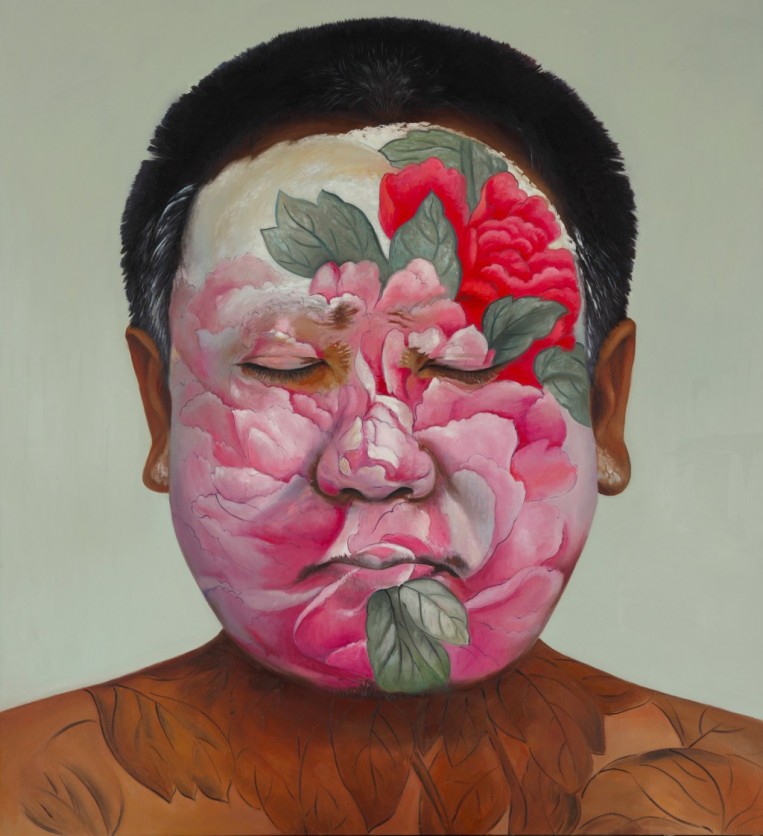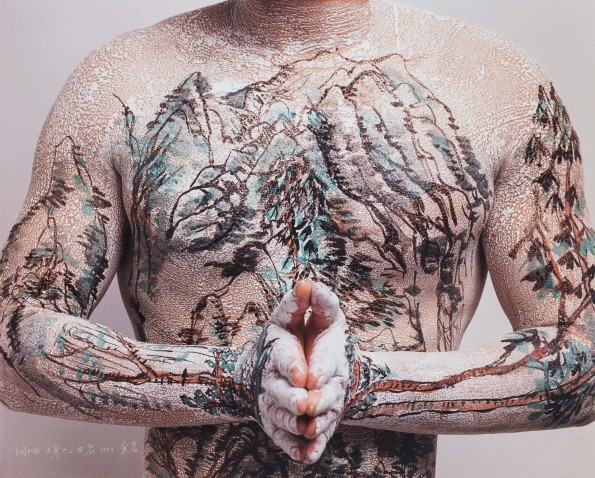Asian Spring


A poet inspired by the classical traditions of calligraphy and landscape painting, Huang Yan, assisted by his wife Zhang Tiemei, covers various surfaces with his art - first the flesh and bones of cows, and then his own body with painted blue-green mountain landscapes. This art, which draws on Chinese traditions and an interest in the human body, is nevertheless conceptual and resolutely contemporary.
In 1999, Yan began his series of paintings based on the famous photographs entitled Chinese Landscapes - landscapes painted on the skin of a human body. His work was immediately noticed by leading curators, including Feng Boyi and Ai Weiwei, who selected several prints for their explosive ‘Fuck Off’ exhibition in Shanghai in 2000.
Very few artists have succeeded so well in simultaneously capturing the fusion and paradox that results from the encounter between traditional Chinese culture and the contemporary world. Yan’s work explores Chinese cultural heritage through the theme of scenery and landscape. Landscapes have become the epitome of Chinese art since the first paintings made during the Han Dynasty and the culmination of the theorization of landscape painting that occurred under the Song Dynasty.
However, the artist breaks with this tradition by taking it in a new direction. He achieves this by transposing it onto the human body, which was very rarely used in ancient painting practices, but which has played a significant role in the development of contemporary Chinese art since the late 1970s. The skin becomes the artist’s canvas, leading the viewer to wonder whether the object of the work is the body or the painting. Is it a painted body, or a landscape? Is it a face, or the branch of a plum tree? As the body moves, the painted matter takes on different shapes and meanings. As an arm bends and rests on the chest, the branch of a willow tree settles in the foreground of the landscape.
Yan pushes the boundaries of landscape painting by using animal bones or meat as his canvas, constantly creating references to the flesh and the body. Then he begins creating scenes, where the landscape becomes a tattooed body, a backdrop worthy of a theatre or photo studio. The artist shows his commitment to the same ideals as those found in the past when he says: “the landscape is a form of self-expression… It is a place of tranquility and a place to store my body. It is a means of resistance against a world of conflict and a way of freeing my ideas.” When Yan uses the body as a space of creation, however, he establishes such a contemporary approach that it is hard not to link his work to performance art (Xingwei Yishu), which takes the body as its main medium and which marked the birth of contemporary art in China.
Due to both cultural and political reasons, the body remains a taboo in China. The body carries a dangerous and often unsettling potential, and society seeks to control it while artists constantly explore and examine it. As a site of self-expression that can lead to eccentricity and self-assertion, the body has become one of the main sources of inspiration for the creators and artists who have formed the foundation of contemporary art in China.